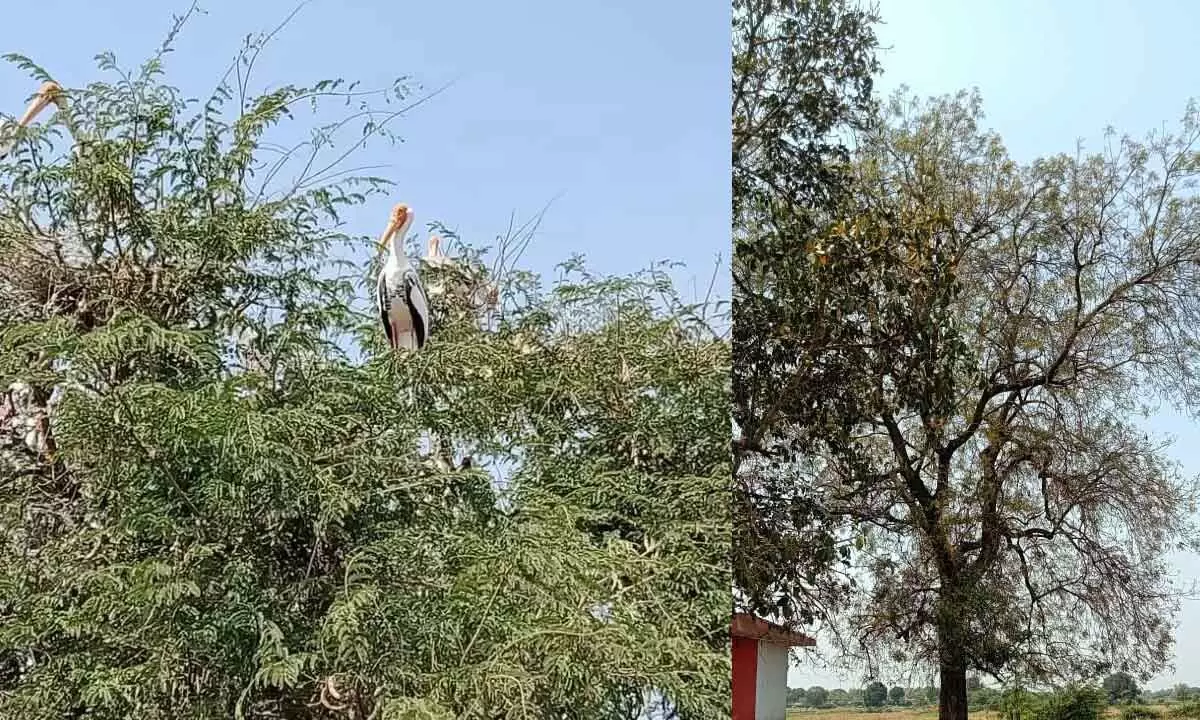Chintapalli keenly waits for Siberian cranes

Villagers are wary that winged guests have not arrived for last two years
The migratory birds usually fly in January and leave in July after building nest and breeding their young. Tamarind trees (Chinta Chetlu) in the village provide a perfect abode for these birds while fishes from the Chintapalli Lake and Palair reservoir and other lakes make for a feisty food. The village abounds in tamarind trees, and hence, the name 'Chintapalli.' An adult is unmistakable with all-white plumage, save for a crimson face and black wingtips. Juveniles are whitish, with a light brown head, neck, back, and wings. They usually forage in small groups around water bodies, primarily for plant matter and invertebrates.
But a few years back, unable to bear the foul smell emitted by the birds, the residents chopped off a number of trees, with the result that the numbers of birds declined almost to nil. However, the villagers feel nostalgic and are eagerly hoping for their arrival in good numbers as in the past. The village fame, too, thus has been on the wane, as a result. R Rama Krishna, a villager and a guide for the tourist spot since 1980, says around 1,500 to 2,000 Siberian cranes used to arrive in the area which used to teem with tourists and lovers of birds who indulge in bird watching.
Apart from felling of the trees, the monkey menace too contributed to the disappearance of the birds, rues Ramakrishna. Monkeys were raiding the nests and destroying the eggs of cranes. Another villager Thota Yala Rao said the birds used to be looked upon as harbingers of luck to the villagers. Many of the villagers who chopped the trees now regret doing so. Divisional Range Officer ( DRO) Suresh Kumar said they had invited an expert to suggest ways to facilitate re-habitation of the birds in the area.
Wild Life expert at Singareni Collieries Company Limited Deepak Ramayan says the migratory birds need sufficient food, water and weather conditions for living and breeding. A number of lakes, streams and water bodies were under the programme of Mission Kakatiya, resulting in constructions and increase in human presence much to the inconvenience of the birds which seem to avoid the area.




















